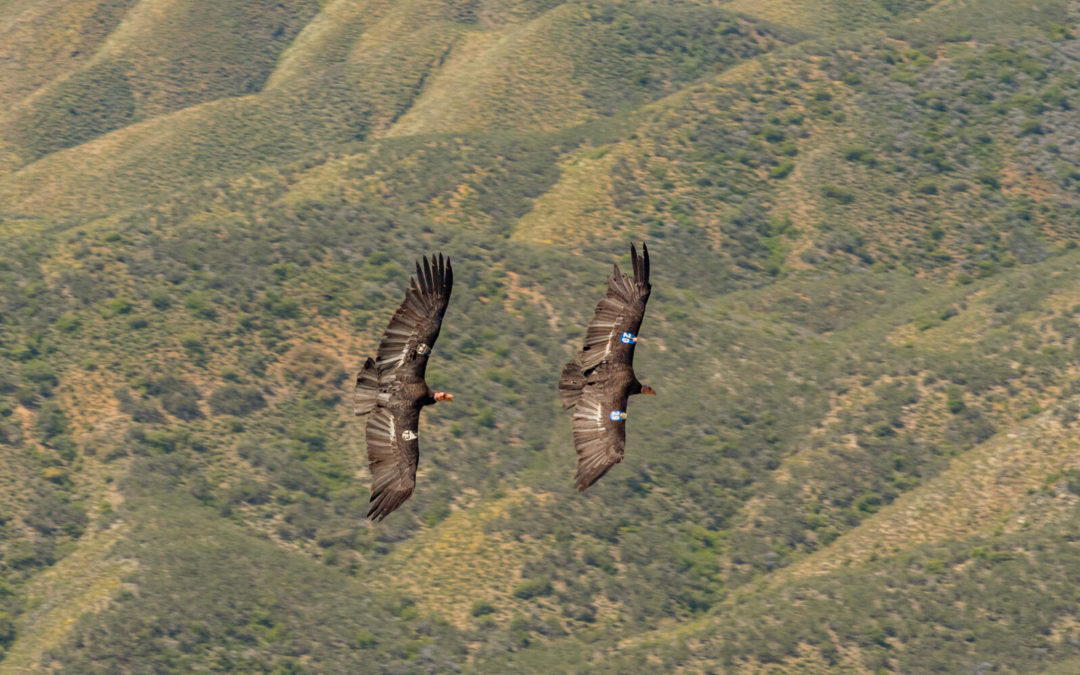SOURCE: Audubon
DATE: December 23, 2020
SNIP: The California Condor is perhaps America’s most iconic endangered species and conservation success story. In the 1980s, the wild population dwindled to just 25 birds, which were brought into captivity as a last resort. By the end of 2019, 337 California Condors soared over the West Coast. It’s still an endangered species, but biologists’ hard work rearing condor chicks and releasing them to the wild has paid off. The population continues to recover and expand.
But the condors may soon be a victim of their own success. This week the U.S. Fish and Wildlife Service (FWS), the federal agency charged with protecting condors and other endangered species, announced a draft plan five years in the making to allow an energy company to kill a small number of condors at a southern California wind farm. To get the permit, which would apply only to condors killed incidentally (as opposed to intentionally), the company would have to fund efforts, costing millions of dollars, to both prevent condor-turbine collisions and ensure more condors are released to the wild.
The plan is not final, and the agency is seeking public opinion on the proposal through February 5, 2021. While it is almost certainly going to spark a firestorm among conservation advocates, the plan is also an acknowledgement of an uncomfortable truth: that conservationists’ goals—expanding renewable energy to address climate change and recovering endangered species—are not always in alignment. Indeed, the condors and wind turbines appear to be on a collision course.
California Condors once ranged across North America. But a bevy of human impacts, including shooting, poisoning, egg collecting, and lead poisoning from ammo, largely driven by European colonizers, squeezed the birds into a narrower and narrower range. FWS listed the species as federally endangered in 1967 and launched a captive-breeding program in 1982. By 1987, after the last wild California Condors were brought into captivity, the birds were extinct in the wild.
Since then, the species has undergone a remarkable comeback. Biologists figured out how to get the massive raptors to breed in captivity, and by the late 1990s around 20 young condors were produced every year and released to the wild.
The potential condor-turbine collision site addressed in the new draft plan is in southern California’s Tehachapi Mountains in Kern County. Since 1992, FWS biologists have released captive-bred condors 75 miles to the west of here, at Sespe Condor Sanctuary within the Los Padres National Forest. As the population has grown—up to 99 individuals in 2019 from six in 1992—the condors’ range has expanded, too. In 2017, GPS transmitters showed that the wide-ranging scavengers soared across 17,500 square miles of southern California territory—a range expansion of 7,000 square miles in five years.
That expansion has pushed them into a dangerous area: the foothills of the Tehachapi Mountains, where the spinning rotors of more than 4,000 wind turbines put the scavengers at risk of collision. The Tehachapi Wind Resource Area, a patchwork of wind farms owned by around a dozen private companies, produces more than half of California’s wind energy. The first turbines were built here in 1986, and more have been added through the years. Last year Amazon proposed a new addition to meet its climate change goals.
The permit would allow Manzana to incidentally “take” (legalese for kill, harass, or harm) two free-flying California Condors, and two associated eggs or chicks that could die in the nest as a result, over the next 30 years.
This draft permit also points to larger issues around endangered species planning and habitat designation. The condors had been released in the Los Padres National Forest on an ongoing basis for 20 years when Manzana Wind began its operations not far away. Yet the wind farm was built anyway, seemingly blind to the incoming collision if California Condors successfully reestablished the population.
“It doesn’t seem like a good place to have put one in the first place. Wind developers aren’t paying sufficient attention to these issues ahead of time,” says Mike Parr, president of the American Bird Conservancy. “The only way a species can recover is by occupying habitat they are not currently living in. If you’ve already filled that habitat with wind turbines, how are they going to recover?“

